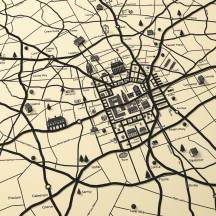Inaccurate Maps in Self-Driving Cars
September 2024
Self-driving cars rely heavily on accurate high-definition maps for safety and precise navigation. However, inaccurate or outdated maps can lead to serious safety issues and injuries.
A map that is inaccurate can direct a vehicle onto an unsafe road, construction zone or hazard that is not reflected on the outdated map. When the map does not reflect the reality of the acutual road conditions, confusion can be created in the vehicle's decision processing systems. For example, if lane markings or road signs have changed , the car may misinterpret its position. Further, important safety features like speed limits, traffic signals or road obstacles may be missing from inaccurate maps. Discrepancies between the mapped and actual road features can cause the vehicle to miscalculate its position on the road.
A map that is inaccurate may lead a self-driving vehicle to take suboptimal routes or make unnecessary stops and manuevers due to map errors.

Unlike human drivers, who can compensate for errors on a map with visual cues and driving experience, the autonmous vehicle cannot adjust easily to map inaccuracies. This can lead to dangerous situations where pedestrians and other vehicles on the road are placed in danger.
At Herrick & Hart, we have been on the side of the injured since 1951. We offer a free consultation on personal injury cases.
